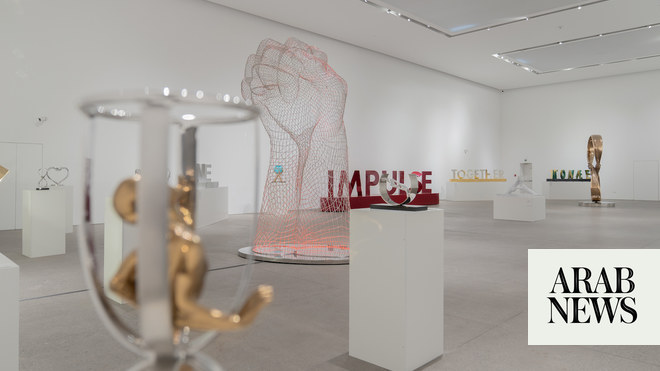
“Rome chose me and not vice versa. This idea wants to be a bridge between cultures,” Fahad told Arab News
He could not be in Rome for the opening of the exhibition, which is open to visitors until Dec. 10
ROME: Saudi artist Sultan bin Fahad has chosen Rhinoceros, an art gallery in Rome’s historic heart, for his first solo show.
The exhibition, “Frequency,” is staged in a 15th-century building recently renovated by French architect Jean Nouvel, and includes six installations featuring light, incense, shadows, music and sounds. Each piece describes a spiritual journey to modernity through many cultures, but one that is firmly linked to Islam.
“Rome chose me and not vice versa. This idea wants to be a bridge between cultures,” Fahad told Arab News from Los Angeles, where he lives. He could not be in Rome for the opening of the exhibition, which is open to visitors until Dec. 10.
“Each of my creations is specific. I wanted to tell a concept that was understood and expressed by the surrounding place,” the artist said. Over the years he collected precious antique pieces from Makkah and Madinah which he found all over the world, including some metallic pieces which had gone missing in 1979. He shot videos and recorded sounds, and used everything in the artwork that describes what he sees as the human journey toward a sacred temple of feelings.
The exhibition includes “Been There,” a piece with four ancient stones inscribed in Arabic interacting with a large plate of luminescent glass. Then comes “If Stone Could Speak,” with white marble works from Makkah. A video is projected showing men and women gathered in prayer.
Another work, “Possession,” shows an image of the hands of men and women trying to get closer to an elusive God, trying to touch the tomb of the Prophet Muhammad (peace be upon him).
“I filmed those people and I was interested to understand why they were doing those gestures. They were trying to reach the divine. I thought it was moving,” Fahad said.
“The Verse of The Throne” contains a projection of a verse from the Holy Qur’an in front of six bowls, with water serving as an element of purification. Then comes “The White Noise,” represented in two immersive rooms, associated by the artist with the prayers of Makkah pilgrims.
Fahad said the exhibition looks to “involve all the senses to create a real experience, going beyond a visual experience for the visitor.”
In this sense, his works represent the place where anthropological concepts were born and became infused by Greek, Latin and Eastern cultures.
In fact, in the Arabian Gulf, humans once measured their existence through the loss of their relatives, creating a cult of the dead, which is reflected in Fahad’s work.
The artist is waiting to see what the future has in store. “I have no plans so far. I am so happy that I could produce something in 2020 due the the difficult time the entire world is experiencing. Let us hope that the situation will evolve for the better,” he said.










